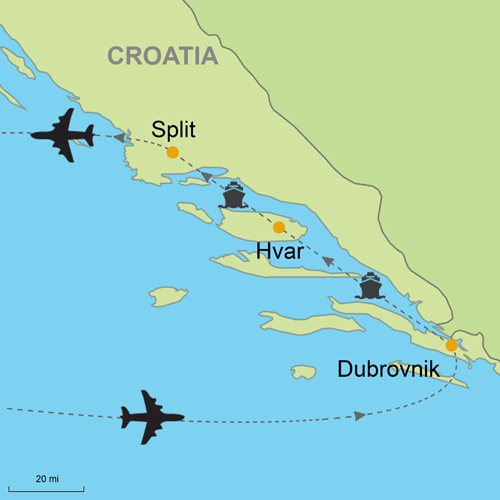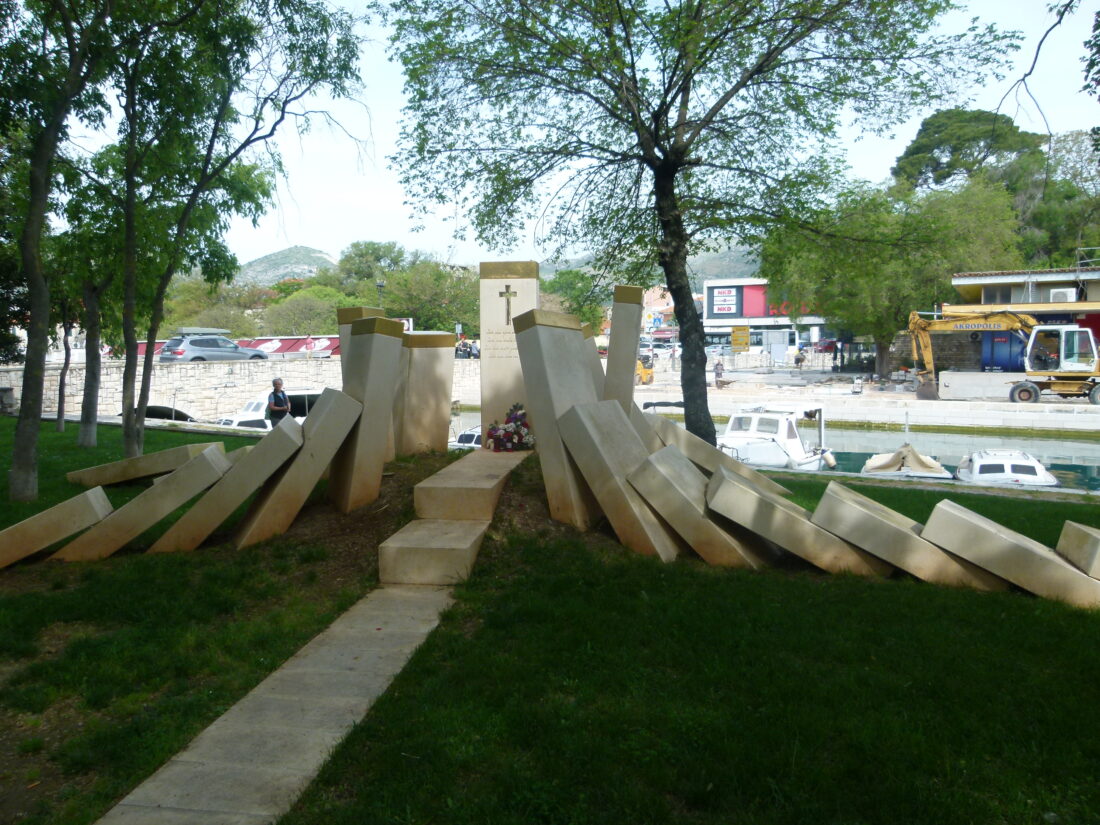I started the April 16th blog with the announcement that my wife and I were leaving for three weeks to Europe mainly to memorialize 80 years of liberation in two locations in Germany. The next blog will focus on that experience. We were “grounded” in the US for the last two years mainly because of health issues (an 80 year memorial of something means that I am older and health is an issue). We decided that before the memorials we deserved to be tourists for one week. Neither my wife or I had ever been to Yugoslavia and it doesn’t exist as a single country anymore. During the years after the Yugoslav Wars, Yugoslavia was split into 8 small countries, which are shown in Figure 1 and listed in Table 1.

Figure 1 – Countries in former Yugoslavia
Table 1 – The 8 countries formed after the breakup of Yugoslavia in the 1990s
Population and GDP – Nationmaster, Tourism – AI (Through Google).

As the table shows, tourism is an important element of the economy in 2 out of the 8 countries: Croatia and Montenegro. We decided to follow the trend and were fortunate to have a Croatian travel agency, Jay-Way agency, help in designing this trip. We started in Dubrovnik, from which we traveled for a day trip to Kotor, Montenegro. From Dubrovnik we traveled by boat to the fascinating island of Hvar. We ended our “tourist” week in the second largest city in Croatia, Split. All these places are located in the southern part of Croatia on the Adriatic coast.

Figure 2 – Split, Hvar, and Dubrovnik (Source: Tripmasters)
The distance between Dubrovnik and Split is 232 km (144 miles).
The main attraction of these cities is that although they are modern urban environments, they contain “old cities,” so you can walk through two thousand years of history in one day. The additional attraction, obviously, was the beautiful Adriatic coast and the fact that almost everybody speaks fluent English. To get a sense of the history, I am summarizing below the highlights of the changes in governance there over the last 2,000 years (earlier for Split and a bit shorter for Dubrovnik). The end of April there is early summer and the water was too cold for us but the weather was very cooperative. However, the rich history was a great attraction.
History of Dubrovnik and Split (AI Through Google):
Governance of Dubrovnik:
- Ancient Period (before 614 AD):
Dubrovnik was part of the Roman Empire, specifically the Province of Dalmatia.
- Early Medieval Period (614-1205 AD):
Dubrovnik was founded by Roman refugees as Rausa and later came under the control of the Byzantine Empire.
- Venetian Influence (1205-1358 AD):
Dubrovnik acknowledged Venetian suzerainty, but retained much of its independence, becoming a powerful mercantile power.
- Republic of Ragusa (1358-1808 AD):
Dubrovnik became an independent city-republic, known as the Republic of Ragusa or Ragusa, ruling its territory along the Dalmatian coast.
- Napoleonic Period (1808-1813 AD):
Dubrovnik was conquered by Napoleon’s French Empire and annexed into the Napoleonic Kingdom of Italy.
- Austrian Habsburg Rule (1813-1918 AD):
After Napoleon’s defeat, Dubrovnik became part of the Kingdom of Dalmatia within the Austrian Habsburg Empire.
- Kingdom of the Serbs, Croats, and Slovenes (1918-1941 AD):
Following World War I, Dubrovnik was part of the newly formed Kingdom of the Serbs, Croats, and Slovenes.
- Yugoslavia (1941-1991 AD):
Dubrovnik was later incorporated into the Socialist Republic of Croatia within the Socialist Federal Republic of Yugoslavia.
- Modern Croatia (1991-present):
With Croatia’s independence in 1991, Dubrovnik became part of modern Croatia.
Governance of Split:
Roman Period (3rd-7th century CE):
- Split began as the Greek colony of Aspálathos, later becoming a prominent settlement after Salona was sacked.
- It was part of the Roman province of Dalmatia.
- Following the fall of Salona, the Palace of Diocletian in Split became a fortified refuge for Roman refugees.
Byzantine Period (7th-15th century CE):
- Split became a Byzantine city.
- The city played a role in the struggle between the Byzantines, Venetians, and the Kingdom of Croatia.
Venetian Period (14th-18th century CE):
- Venice eventually gained control over Split and other Dalmatian city-states.
- Split remained a Venetian city, a fortified outpost surrounded by Ottoman territory.
Habsburg Period (18th century):
- In 1797, the city was ceded to the Habsburg monarchy after the fall of Venice to Napoleon.
Napoleonic Period (1800s):
- In 1805, Split was annexed to the Napoleonic Kingdom of Italy, and later became part of the French Empire.
Austro-Hungarian Period (19th century):
- After Napoleon’s fall, Split came under the control of the Habsburg Empire, eventually becoming part of the Austro-Hungarian Empire.
Italian Period (early 20th century):
- During World War I and after, Split was briefly under Italian rule.
Yugoslav and Croatian Periods (20th-21st century):
- Split became part of the Kingdom of Yugoslavia, later the Socialist Federal Republic of Yugoslavia, and finally the independent Republic of Croatia.
Modern Croatia (today):
-
Split is the second-largest city in Croatia and a major port and tourism destination.
The rich history is visible in the buildings of the old cities. Some of the walls of the structures expose their origins. Not surprisingly, we had our mobile phones with us and we were able to follow the adventures of the Trump administration at home. He seems to be focused on destroying much of what previous administrations built. What will come after seems unclear. All of this has happened in 100 days. In Croatia, the “sticking together” took 2,000 years. We fully realize that this picture is misleading because what we saw in Croatia was only what “survived” the process. The destroyed part was unseen. Recent history is trying to “immortalize” the destruction. The breakup of Yugoslavia (in the 1990s), the results of which are shown in Table 1, was a bloody process that almost everybody we talked to regretted (we didn’t talk to Serbs). The monument to Croatian veterans, shown in Figure 3, does a great job representing the destruction that comes with every war.

Figure 3 – Monument to Croatian Veterans (Split, 2020)
If the Croatians hadn’t had the foresight to preserve the “old cities,” their economy wouldn’t have benefited from the inflow of tourists, including us.
